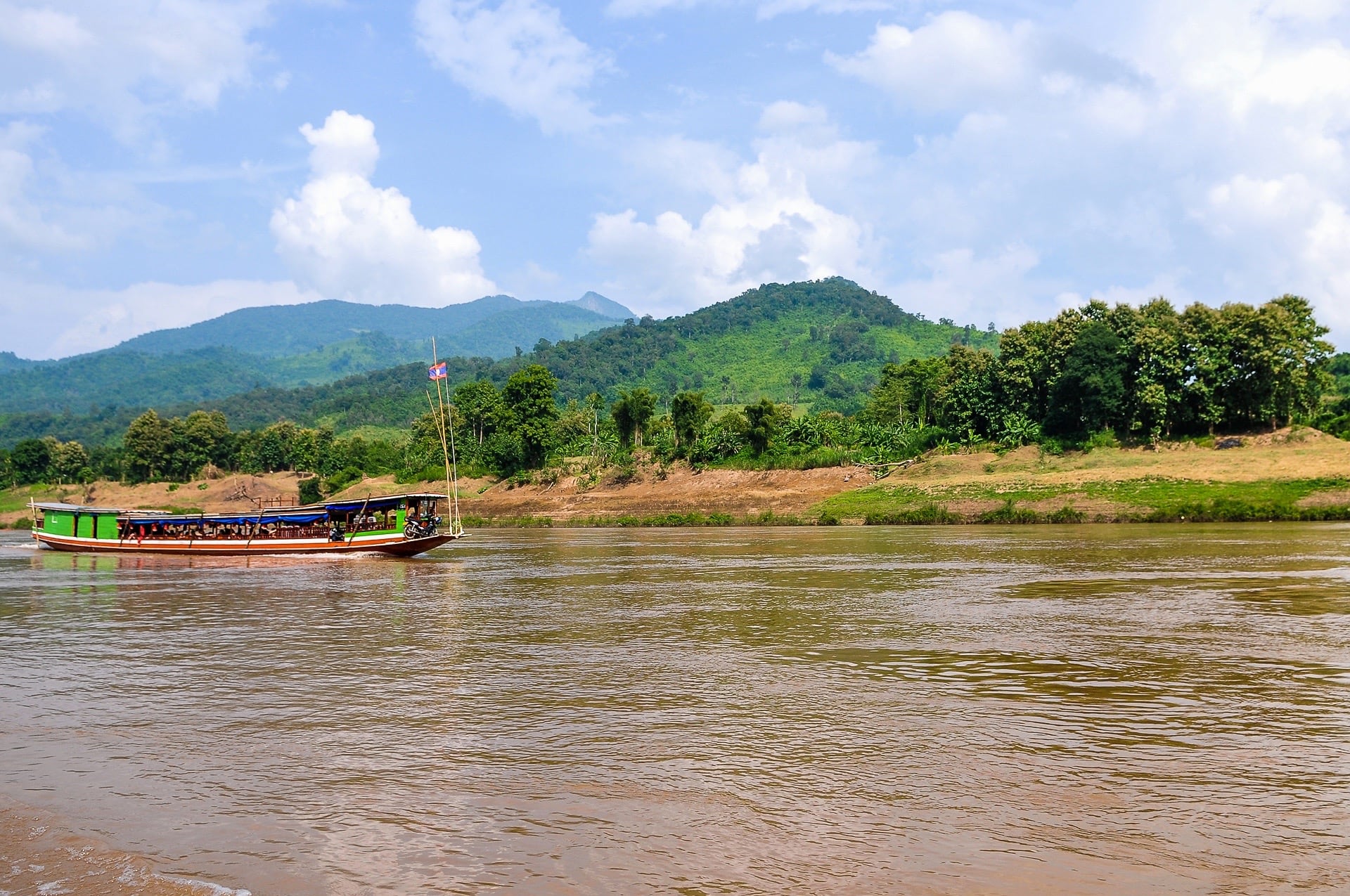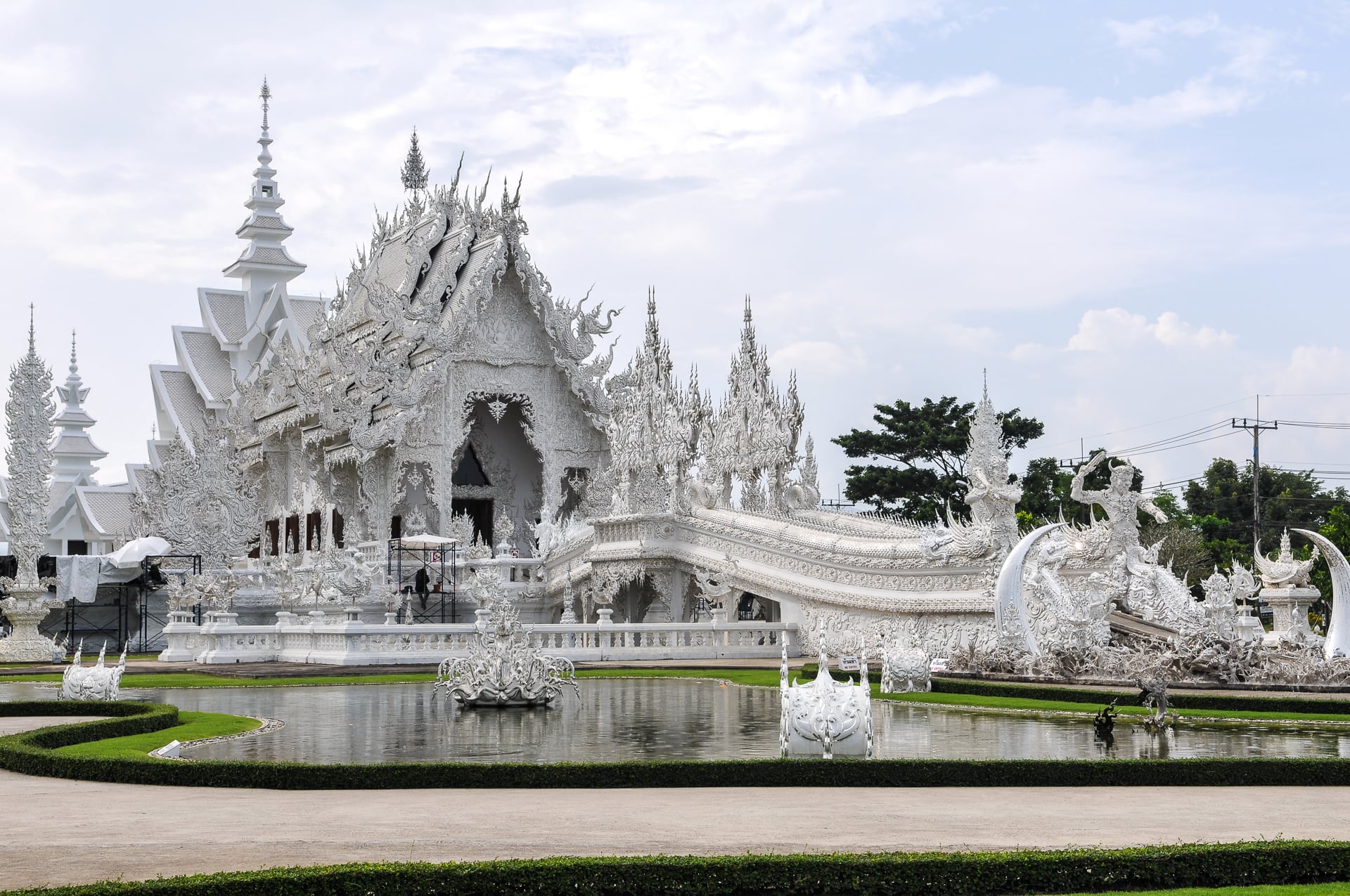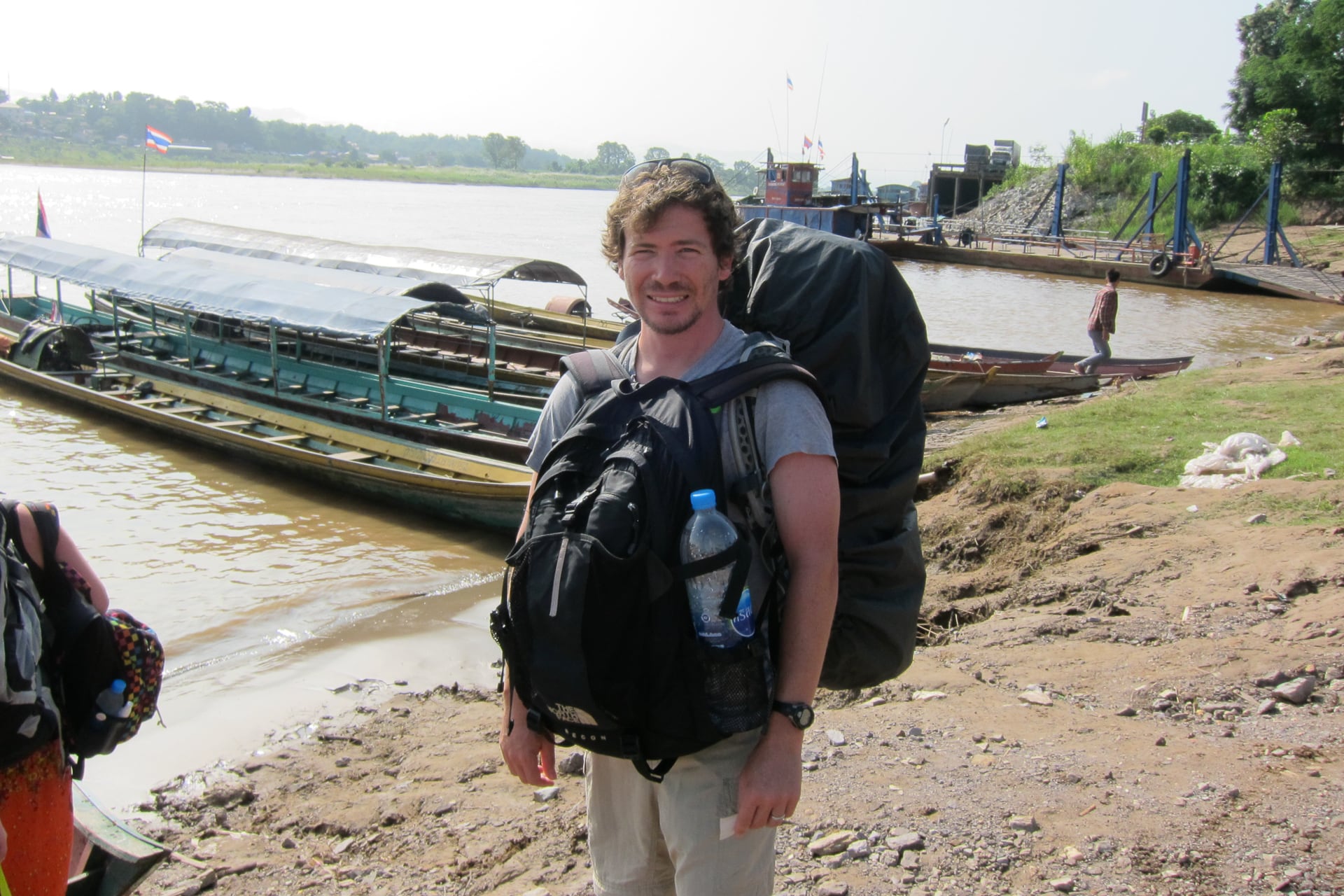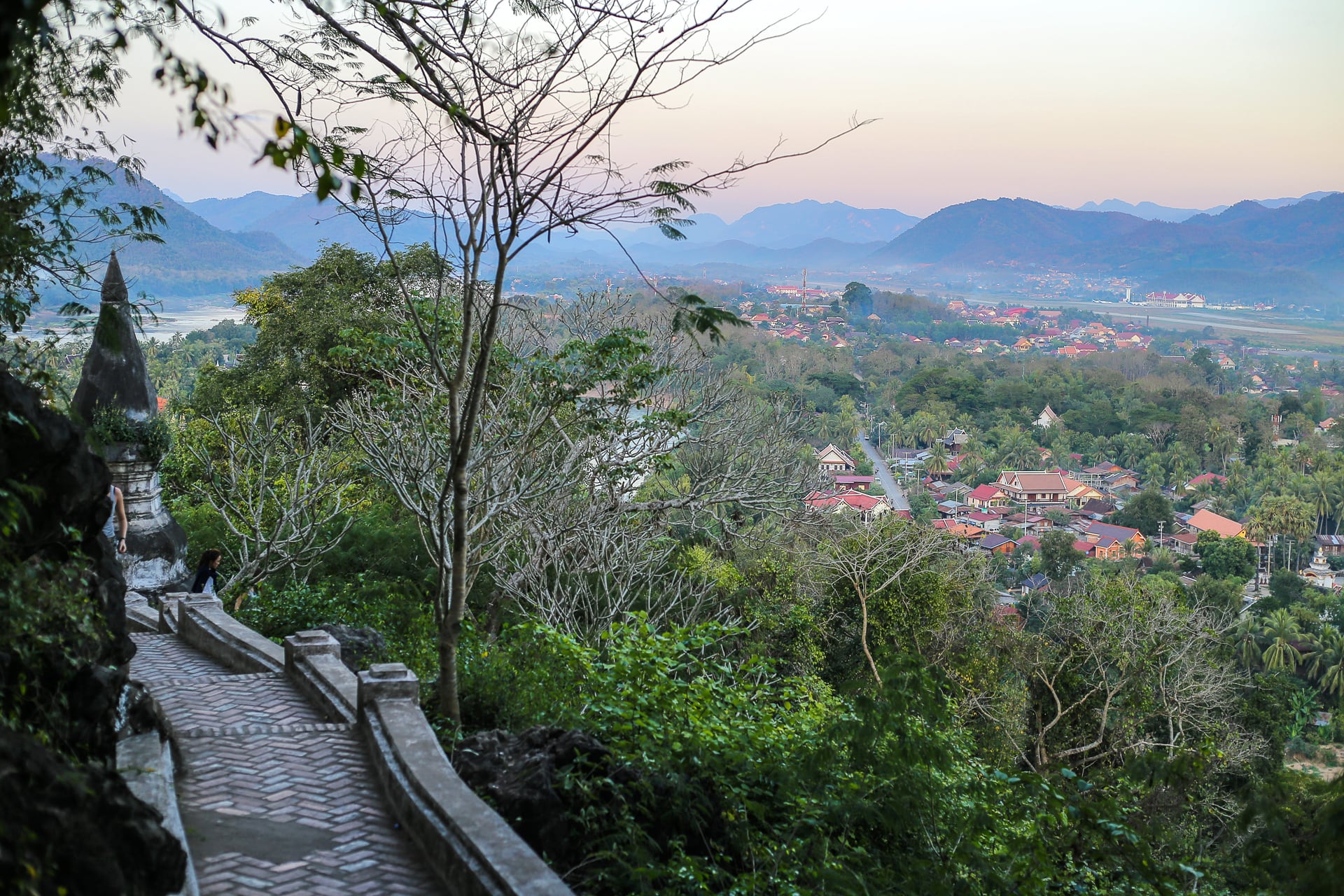Taking the slow boat to Luang Prabang is a unique, once-in-a-lifetime experience that is the embodiment of slow travel in Southeast Asia.
Beginning in Huay Xai on the Laos-Thailand border, the journey takes two days to reach the UNESCO heritage town of Luang Prabang, with an overnight stay in the chilled out transit town of Pakbeng.
If you’re planning your own journey from Chiang Mai or Chiang Rai to Luang Prabang, we strongly recommend this unforgettable experience. It was one of the highlights of our first visit to Laos and may very well be yours as well!
With that said, there are pitfalls to be aware of and important considerations to take into account before taking the slow boat to Luang Prabang.
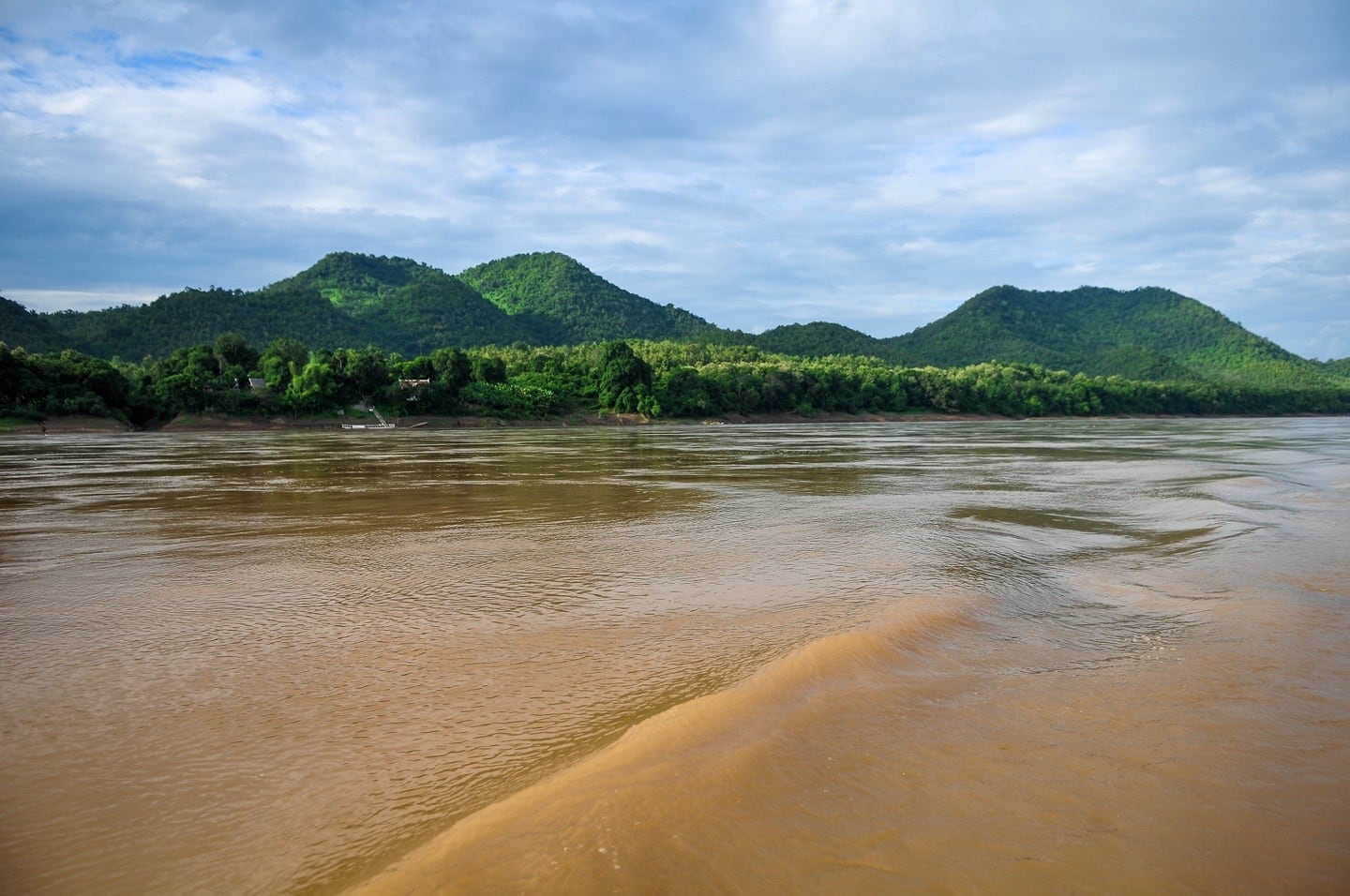
For most backpackers doing the slow boat to Luang Prabang, the journey begins in Chiang Mai or Chiang Rai and ends in Luang Prabang.
The journey typically takes a total three full days from Chiang Mai by land and water, with overnight stops in Chiang Khong, Thailand and Pakbeng, Laos.
The Thailand portion is covered entirely by road (bus/minivan). After crossing the Thailand-Laos border at Chiang Khong, Thailand / Huay Xai, Laos, the remaining two day journey is spent on the Mekong River with an overnight stop in Pakbeng, Laos.
Here’s a breakdown of our three day journey from Chiang Mai to Luang Prabang.
DAY 1 – Chiang Mai to Chiang Khong (Thailand) | Departed guesthouse in Chiang Mai around 11:00; stopped at a cashew factory/store for lunch (local food) and the White Temple (Wat Rong Khun) in Chiang Rai for 30-40 minutes; Arrived in the border town of Chiang Khong around 15:00-16:00; Dinner at guesthouse and overnight stay in Chiang Khong.
DAY 2 – Huay Xai to Pakbeng (Laos) | Ate breakfast at 07:00 and departed guesthouse between 09:00-10:00 for the ferry to cross the river to Huay Xai, Laos; purchased Laos visa-on-arrival just up the road from the ferry landing and passed through Laos immigration; Departed on river boat to Pakbeng around 12:00. Arrived in Pakbeng around 17:00 and secured our accommodation for the night (not included in our joint ticket).

DAY 3 – Pakbeng to Luang Prabang (Laos) | Departed Pakbeng around 09:00, arrived in Luang Prabang around 16:00.
Being something of a purist (read: masochist) when I travel, I was a bit disappointed to learn that current boats plying this route are quite comfortable and touristic.
Nevertheless, this journey still remains one of the top transport highlights of our time living and traveling through Southeast Asia.
After all, it is not every day that we get to spend two days floating down one of the world’s great rivers with no responsibilities but to take it all in and enjoy the ride!
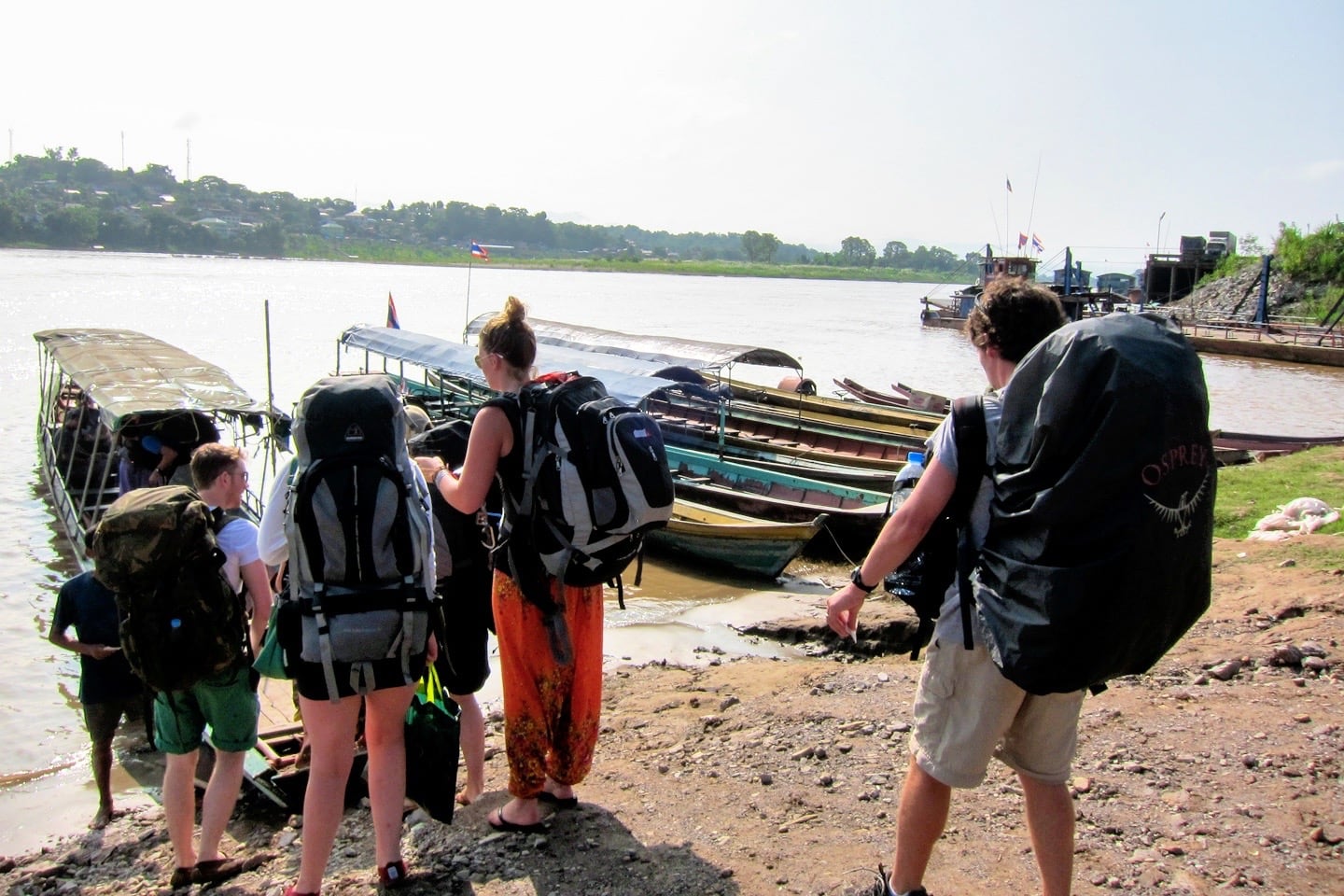
We opted to arrange travel from Chiang Mai (Thailand) to Luang Prabang (Laos) via the Mekong River through a travel agent in Chiang Mai.
Contrary to logic, this seems to be the most common way of doing the slow boat from the Thai border, rather than trying to arrange the overland and river legs independently.
We usually prefer to DIY our journeys, but in this instance it seemed to make sense to purchase a joint ticket in which all transport and the first night of lodging were arranged by the travel agent.
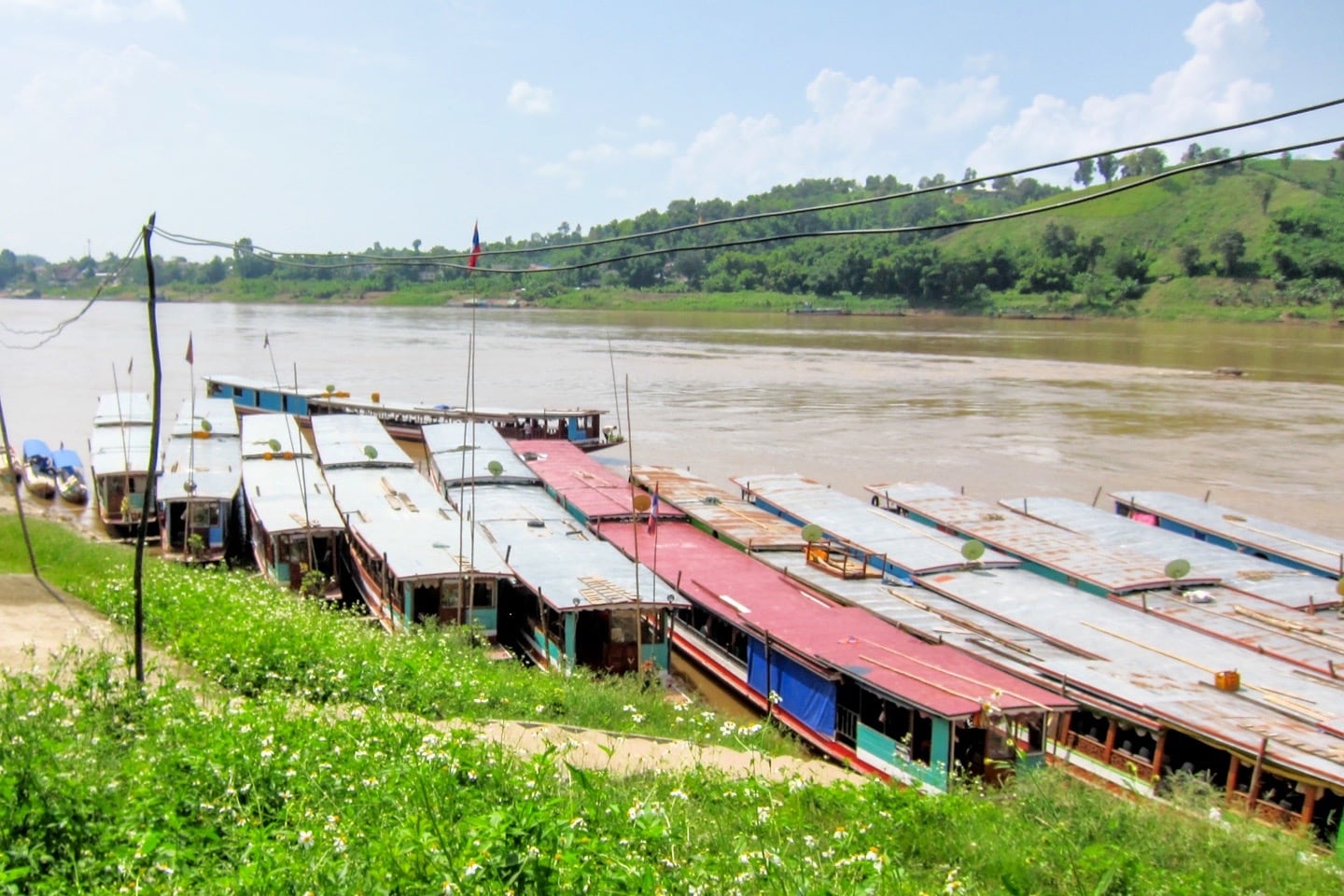
While our overall experience was positive, there were a number of frustrations we encountered along the way, largely due to misinformation or lack of important details.
Here, we try and fill in some of the gaps in info we encountered so that you might be able to better prepare for (and rest a bit easier on) your own slow boat journey.
1. The Boats Leave When They Leave
The itinerary we were given and times we were told prior to departure differed greatly from reality.
For example, we were told that we would be picked up in Chiang Mai between 10:00 and 10:30, but it ended up being closer to 11:30 and some of our crew had to wait until noon as our minivan made its rounds picking other passengers up.
The travel agent also told us that the slow boat would leave Huay Xai at 09:00, but ours ended up leaving closer to noon. The boat basically leaves when the boat leaves. I wouldn’t believe anyone who says otherwise.
On the bright side, while frustrating, it does prepare you for the laid back sabai sabai culture you’re bound to encounter traveling through Laos.
2. Journey Time Estimates Can Vary Considerably
We were also told that it would take seven hours to get from Huy Xai to Pakbeng on the first day of the boat journey, and 10 hours to get from Pakbeng to Luang Prabang on the second day.
This was a drastic over-estimation compared to our actual experience.
We think this may have had something to do with the speed of the river this time of year (we took the slow boat to Luang Prabang in late October, which was right on the heels of the rainy season—very high and very fast with the current).
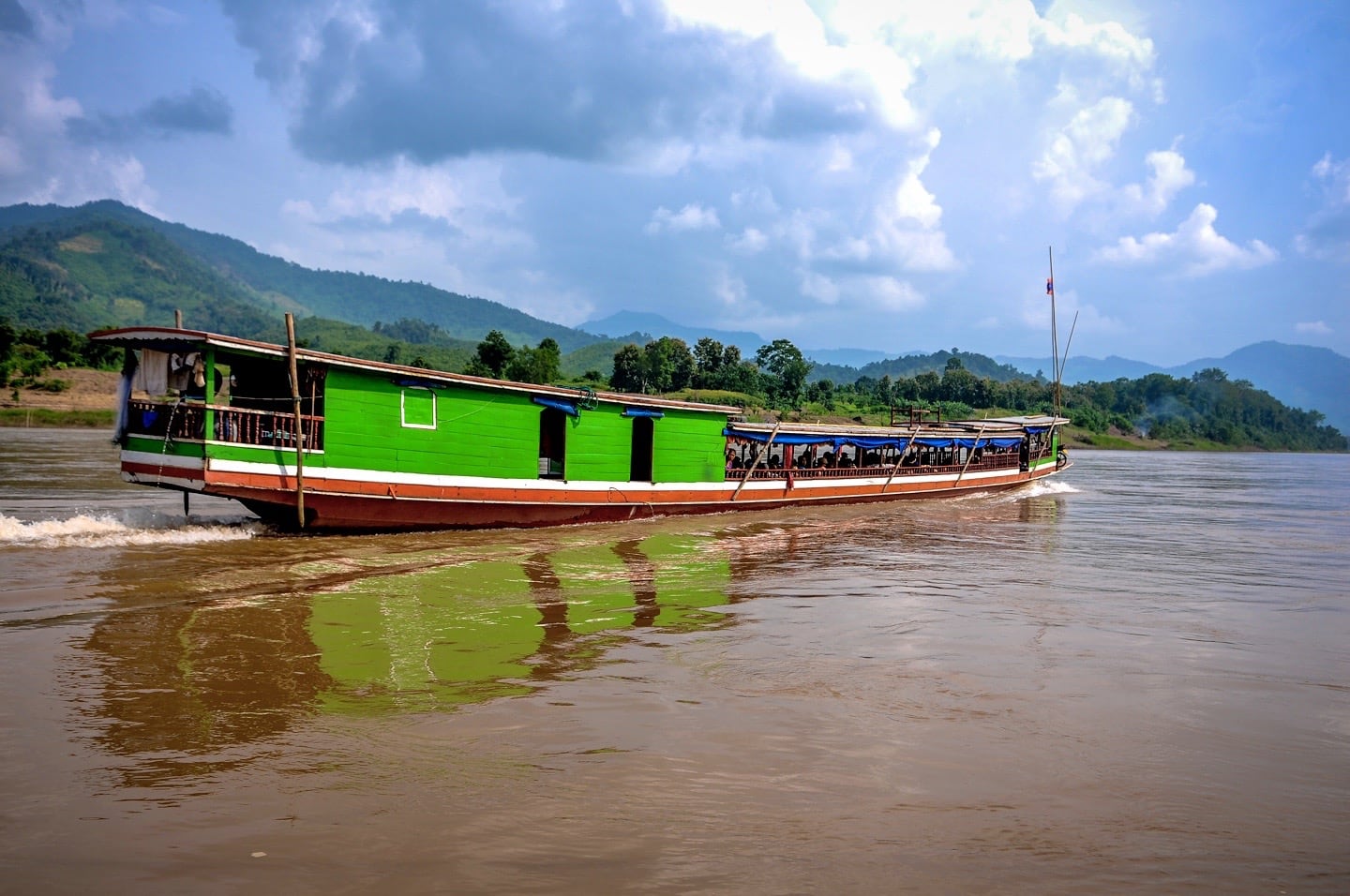
3. The “Slow Boat” Actually Goes Pretty Fast
Something else to take into consideration is that, regardless of being called the “slow boat” it can be quite the speedy trip, especially if it is the rainy season and the waters are running high.
In the rainy season, I wouldn’t take the boat expecting a mind-numbing lazy amble down the Mighty Mekong. We found the boat refreshingly swift, yet never felt it was anything close to dangerous.
The journey is likely referred to as the “slow boat” to differentiate it from the other travel option: the very aptly named “fast boat” which we saw on a number of occasions buzzing by at lightning speed dodging barely visible boulders, logs, and other craziness.
The fast boat covers the same amount of distance as the two-day slow boat journey but in a matter of hours.
However, the time saved with the fast boat comes at a price and Pakbeng is full of local residents with tales to tell of grizzly accidents.
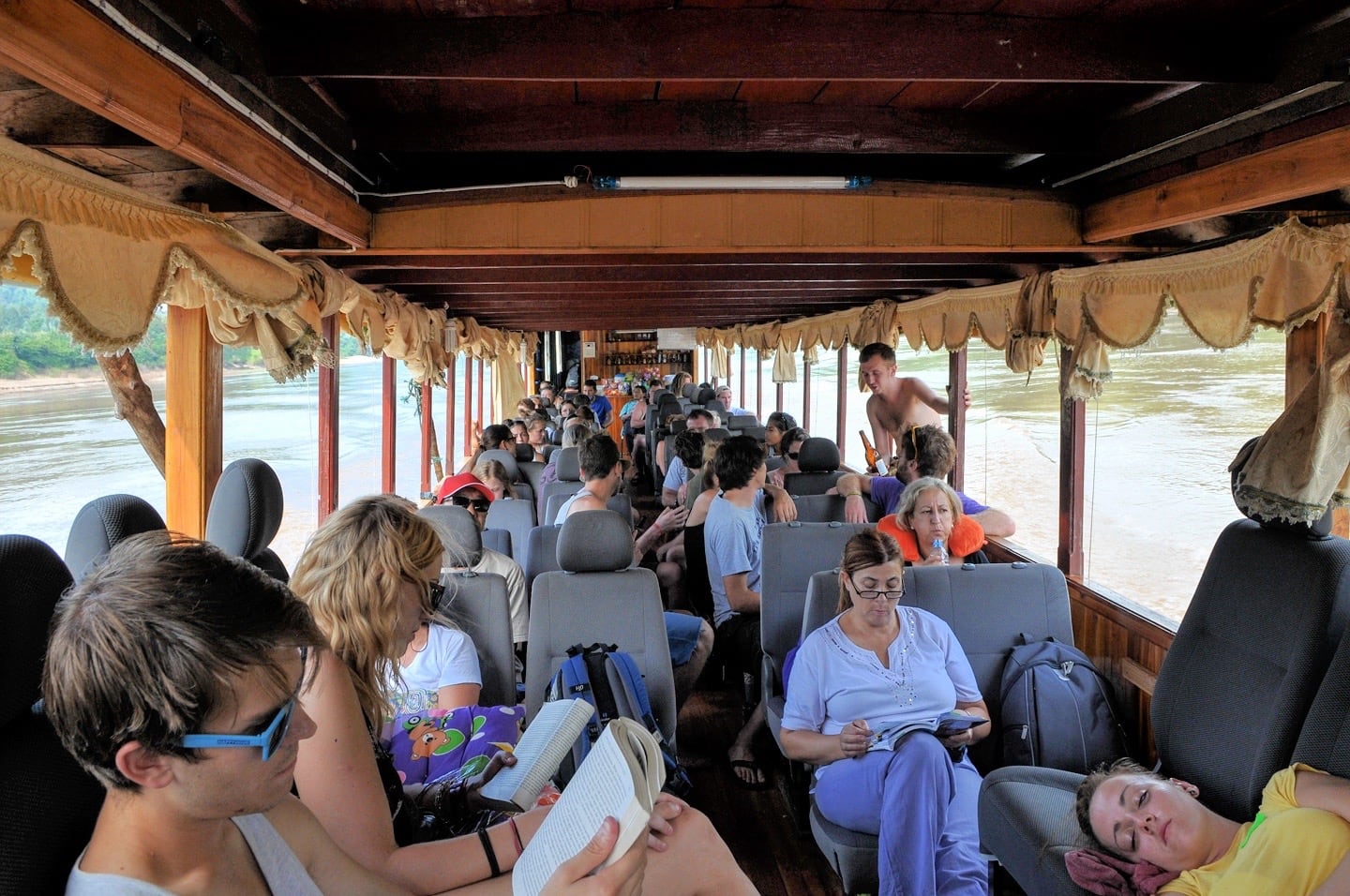
4. To Cushion or Not to Cushion?
Prior to buying our tickets in Chiang Mai, a handful of other travelers urged us to buy seat cushions for the long trip claiming that the slow boat seats were wooden benches and became extremely uncomfortable after several hours of traveling.
We also heard from a number of other travelers that the bench seats on the slow boat to Luang Prabang were a thing of the past and now all boats were outfitted with comfy airline-style (read: minivan) seating.
Turns out, both camps were correct.
The day we departed from Huay Xai, two boats made the journey.
We were on the first boat, which was outfitted entirely with seats transplanted straight from a couple dozen minivans. They were indeed quite comfortable and far more luxurious than we had expected.
However, the second boat, which left right after us, was not outfitted in this way — most of those passengers made the journey on wooden benches or even on the floor.
Not sure of which type of seating we could expect — and being the chronically frugal travelers we are — we thought we’d split the difference and buy one cushion that we both could share back and forth (they were sold at our guesthouse in Chiang Khong).
As we found ourselves with comfy seats on the second day as well, we didn’t end up needing the cushion after all.
But my feeling on the matter is that as long as guesthouses are selling the cushions in Huy Xai then there’s a chance that some of the boats running the route are still outfitted with wooden benches.
5. “Assigned” Seats
Something else worth noting is that we were given assigned seat numbers on our tickets, but they didn’t seem to mean much in reality.
While there were handwritten numbers on small pieces of paper laid out on many of the seats the first day of travel, many of the other passengers did not have assigned seats and no one seemed to pay any attention to the pieces of paper.
We were some of the last passengers on the first boat out, but weren’t concerned about our seating options because we believed we had assigned seats.
By the time we boarded, however, the pieces of paper had been shuffled all around and we got stuck up in the least desirable seats on the boat — facing each at the very front of the long boat.
Being the last to board did have one big advantage — our luggage went into the overflow room where it was easily accessible upon arrival, while the rest of the bags were buried under a hatch.
This meant that we had a head start on securing accommodation when the boat arrived in Pakbeng and everyone else had to wait for their luggage to be unearthed.
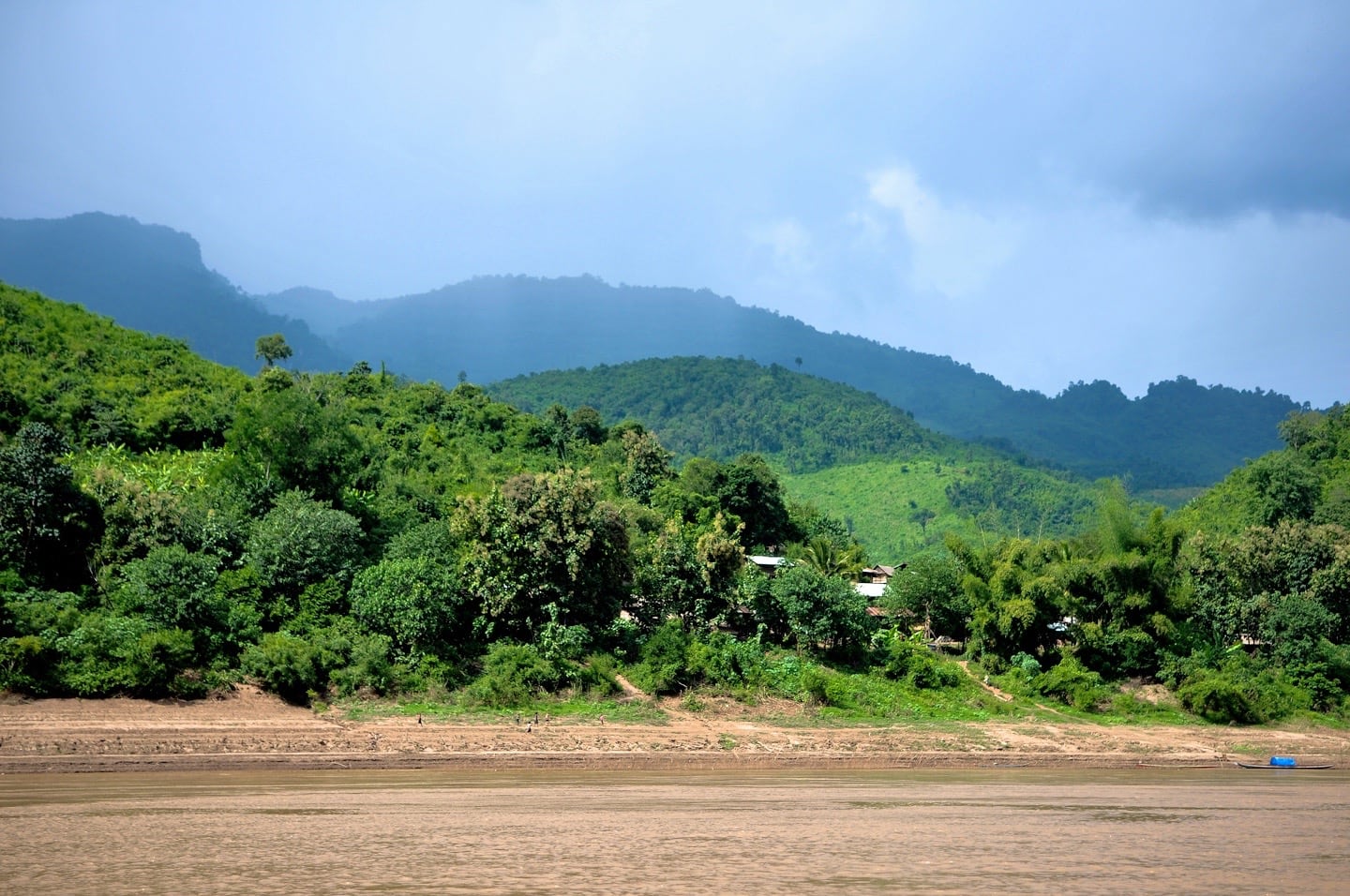
Misinformation, Untruths, and “Scams”
With nearly all joint ticket transport that we’ve arranged through travel agents in Thailand, we again feel that we had been misinformed, but also flat out lied to, quite a bit with regards to the slow boat ticket. If you are planning to do the slow boat to Luang Prabang via a joint ticket from a Chiang Mai travel agent, here are some potential “untruths” and borderline scams to be aware of:
#1, Lunch is included
** FALSE ** The joint ticket generally covers dinner on Day 1 and breakfast on Day 2 (basically the two meals that are associated with the included guesthouse stay on the first night in Chiang Khong, Thailand). Depending on the company, they may also give you a small muffin and a juice box for a snack. If they tell you you get a lunch, this is said lunch. Plan accordingly.
#2, Arrival and departure times are set in stone
** FALSE ** Take all times given to you with a grain of salt. Factor in +/- 2 hours.
#3, Boats only have hard wooden bench seats
** FALSE ** Don’t necessarily believe your fixer/guide when s/he tells you the boats all have bench seats while s/he is holding a cushion for sale in his hand.
Yes, the cushion is insurance, but out of all of the passengers we talked to only a small minority ended up on the boat with benches.
If it’s slow season, chances are good you’ll have comfy seats.
#4, Budget lodging in Pakbeng is booked up tonight
** FALSE ** Somebody at some point will probably tell you that all of the budget guesthouses in Pakbeng (the halfway stopover on the Mekong) fill up fast, or better yet, that they are already full!
Then they will probably tell you that the only accommodation choice you’ll have are expensive hotels which cost $50+ USD per night — so naturally you should prebook with him/her at Guesthouse A or B to avoid disappointment.
DON’T FALL FOR IT!!!
They will charge you two to three times the going rate when you would have had no problem securing cheap accommodation on your own.
Pakbeng is full of dozens of budget guesthouses and have far more rooms than even the busiest nights’ worth of passengers can take. Don’t bother booking ahead, just get off the boat and head to your guesthouse of choice, or do like we did and take a stroll up the main road and check out a few for yourself.
Granted, if you have a strong preference for a particular guesthouse, you should try and be first off the boat.
But even our place, which was a top pick, never filled up completely with over 120 passenger from two boats roaming about town.
#5, No food or drink available for purchase on the boat
** FALSE ** Your fixer/guide may also tell you that there is no food or drink available for sale on the boat.
While the selection was limited and prices were a bit steeper than shops on land, our boat had a variety snacks, noodles, baguette and a full bar with water, beer, soda, coffee, and hard liquor in the rear.
We do recommend bringing lunch and snacks which can be easily purchased at any of the small shops and restaurants on the main drag in Chiang Khong or Huay Xai and there are also a couple of really nice bakeries in Pakbeng on the main road.
#6, There’s no place to change money in Huy Xai before immigration
** FALSE ** There is an official money exchange kiosk in the same building as the visa official. This one is a flat-out lie.
#7, There are assigned seats on the boat
** FALSE ** As we mentioned previously in this guide, as far as we could tell, there was a half-ass attempt to assign seats for some individuals but the system is extremely flawed.
In a nutshell, chances are you’ll probably get a seat but it probably won’t be the one that has been “assigned” to you.
There’s also a potential chance you’ll be sitting on the floor on one of the days.
Our understanding is that it doesn’t happen much, but it happened to a girl we talked to who spent an extra day in Pakbeng and had arrived there the day before we did.
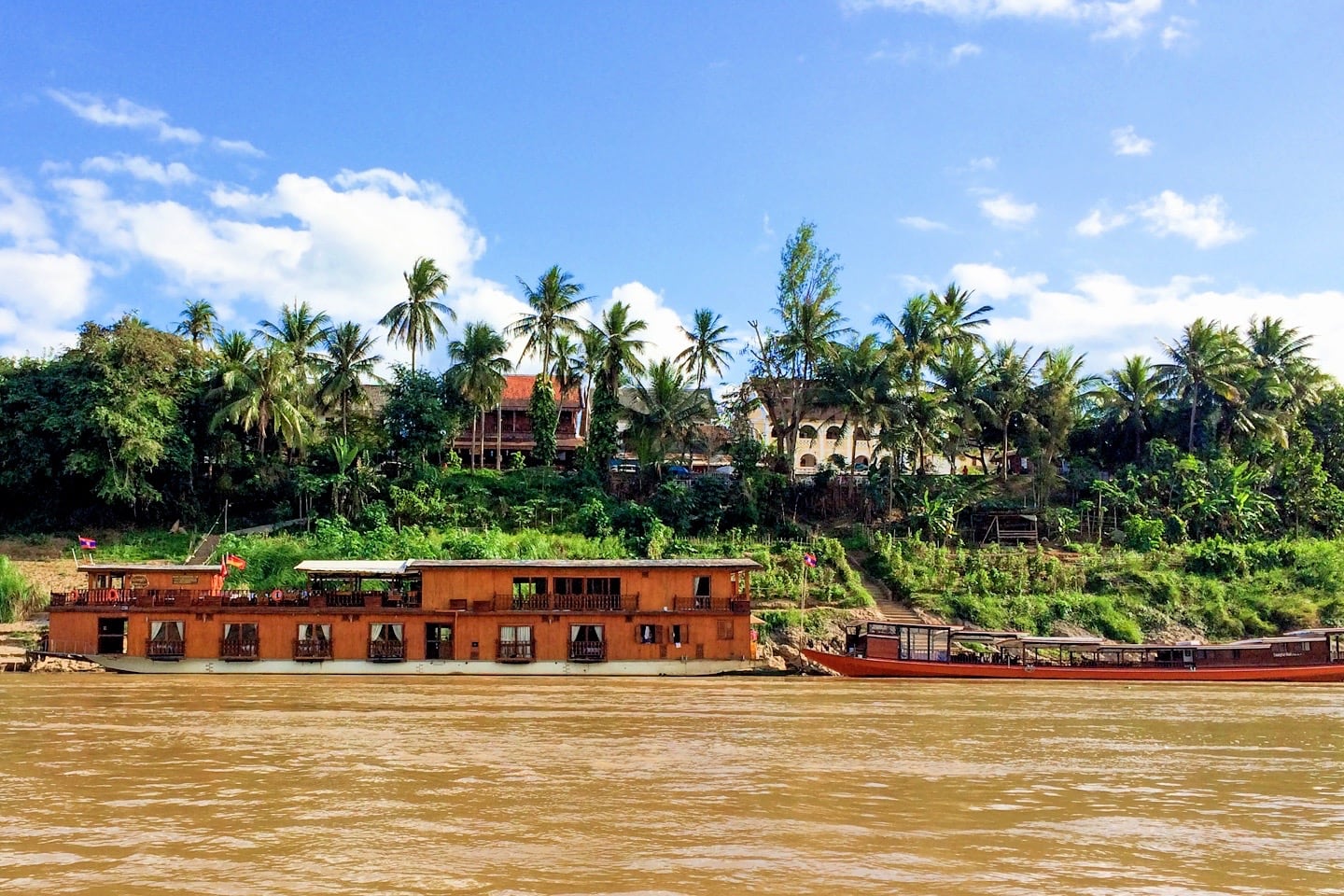
Is the Slow Boat to Luang Prabang Worth It?
YES!
After all that, you may be hesitant to do your own slow boat to Luang Prabang adventure.
Don’t let the potential inconveniences and discomforts we’ve outlined discourage you from doing the journey yourself if you have the time. The benefits far outweigh the costs!
As we’ve said several times in this guide (we simply can’t say it enough), the slow boat was one of the highlights of our travels in Laos, and remains so to this day. The vast majority of other travelers we’ve met who have done it have voiced similar feelings.
You’ll very likely find that going the joint ticket route or piecing it together will result in quite the little adventure.
Whichever way you slice it or dice it, we highly recommend this once-in-a-lifetime river journey in Laos!
